Had Donald Trump really won the election?!
It seems that The Gambia's premier safari camp has for more Gambians attending medical conferences than bird watchers. There were no more than half a dozen birders and their guides and drivers whereas locals outnumbered us by tenfold at least. Not a problem, just few like minded tourists to exchange news with.
A breakfast of baked beans, bread, processed cheese triangles and a wafer thin slice of omelette was uninspiring but would keep me going. The boat set off at 8.00am, four birders and accompanying guides etc.
We were soon of the opinion that there weren't many birds around here either. On our previous visit we had noted that the evening trip was better than the morning one but this was really quite poor numerically. Once again we had some sightings for our tick list, some lifers amongst them.
Spur-winged Goose.
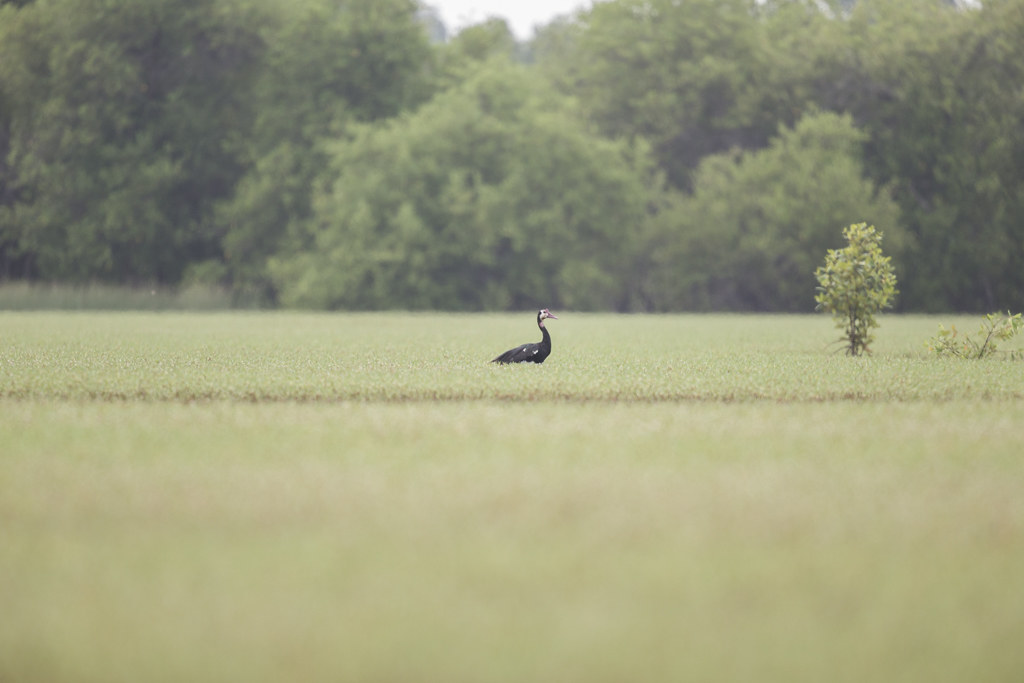
and a martial Eagle on her nest.
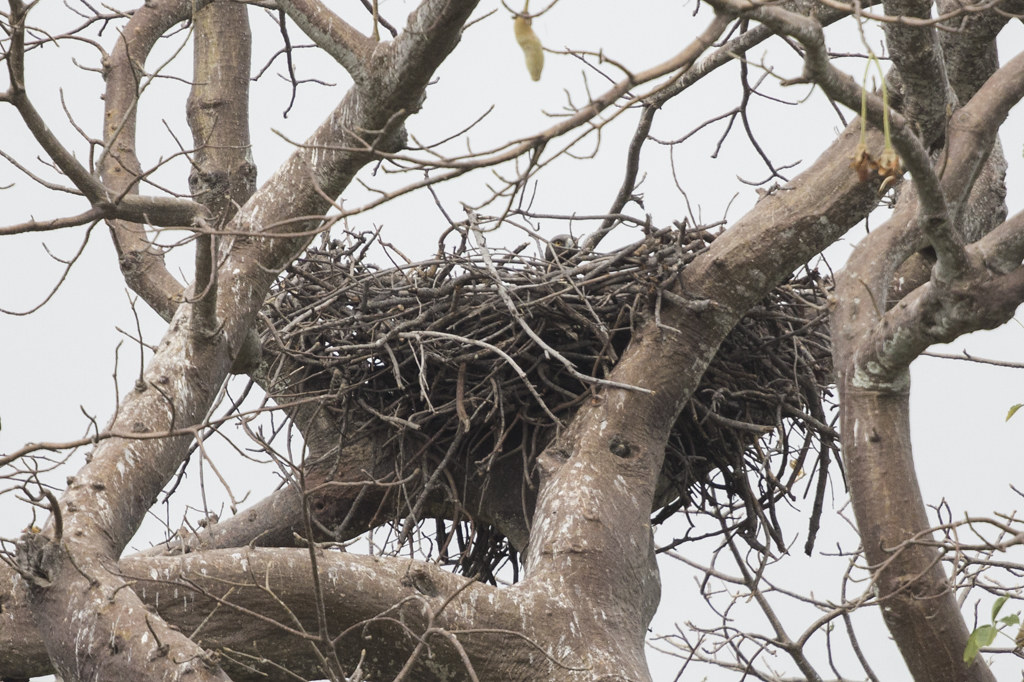
That nest was probably half a mile away!
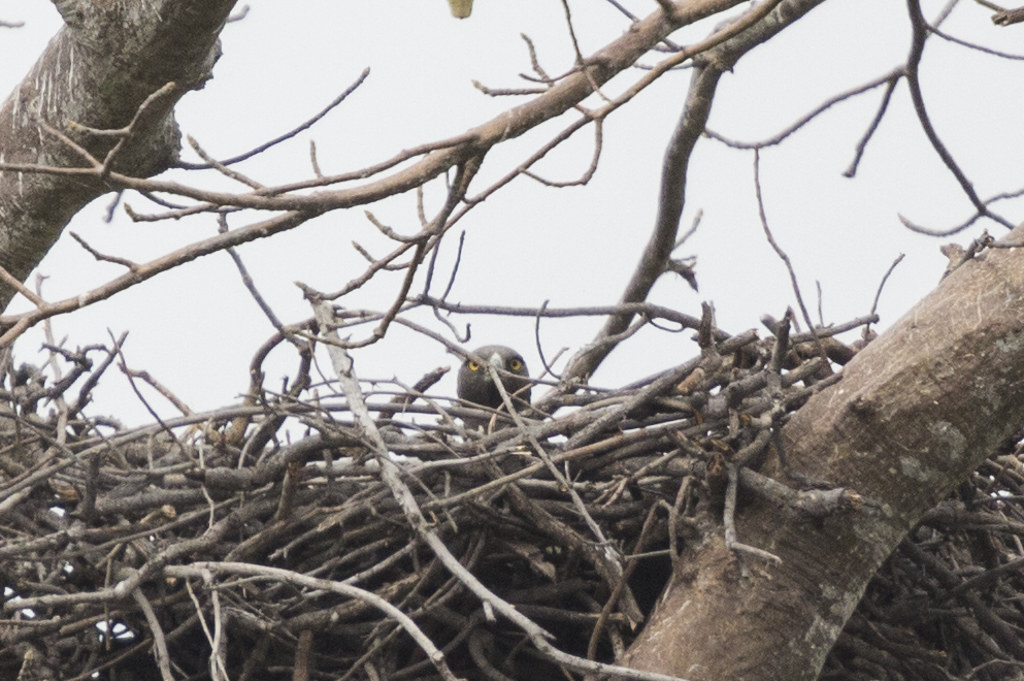
Alan debated with himself as to whether it actually merited a tick on his list, in my opinion the eyes have it!
As well as these two we had views of more familiar subjects like Darters and Great Egrets.
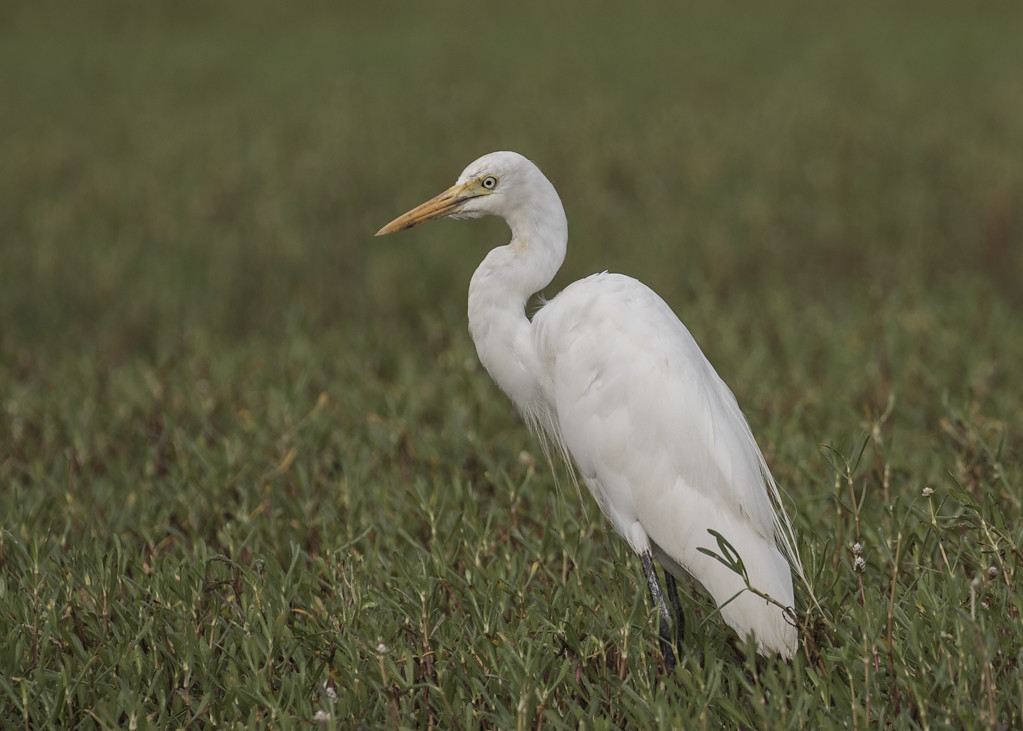
but one I hadn't seen at this location were Wooly-necked Stork.
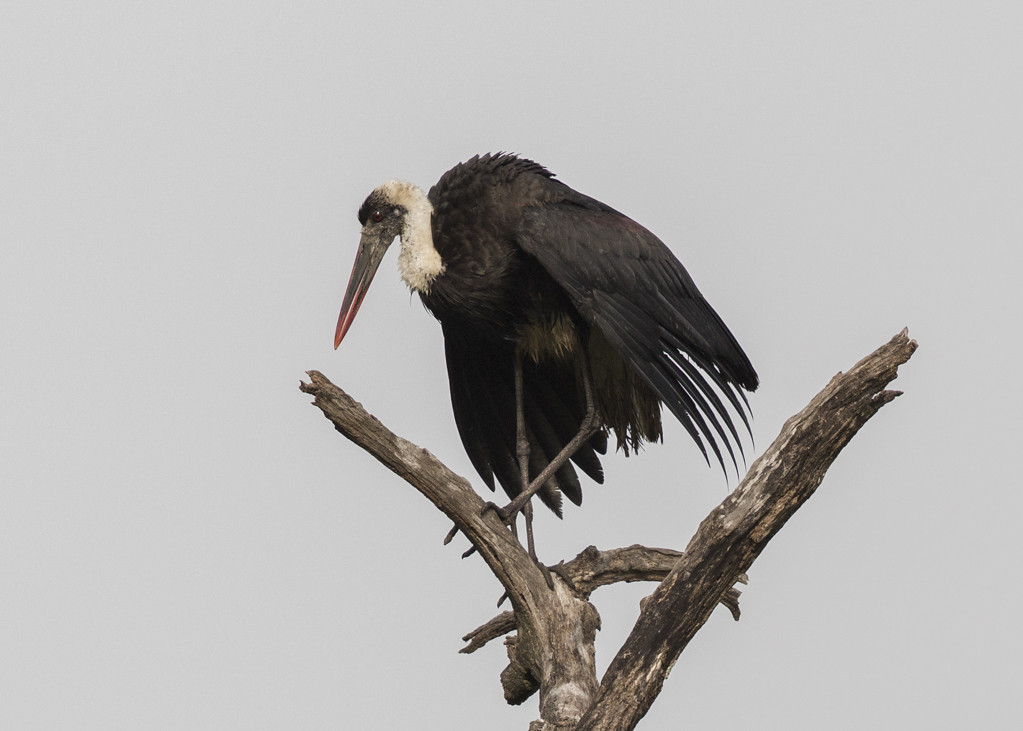
Numbers of White-breasted Cormorant were down from hundreds last time to a current handful.
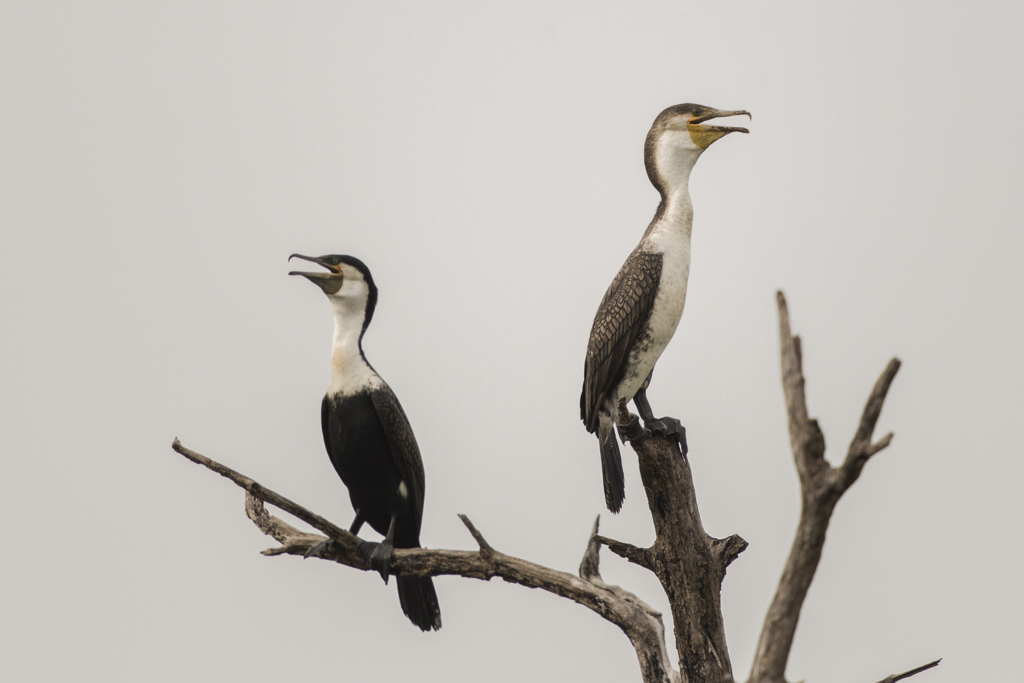
We had to assume that they had yet to return for their breeding season although perhaps they have found a new location.
The prize species for this trip though was the White-backed Heron.
A shy and mainly nocturnal bird, a pair were actually on a nest on the edge of the river.
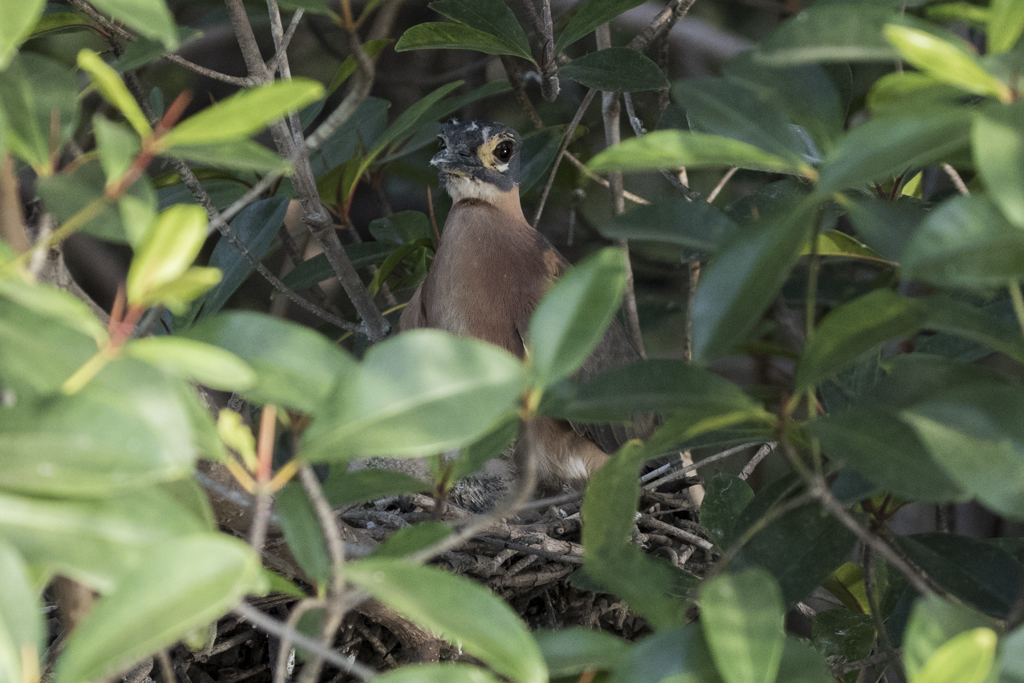
The minute we approached the parent left the nest in which there were a couple of chicks and headed off to join it's mate a short distance away.
I got one shot off using my 100-400 lens before changing.
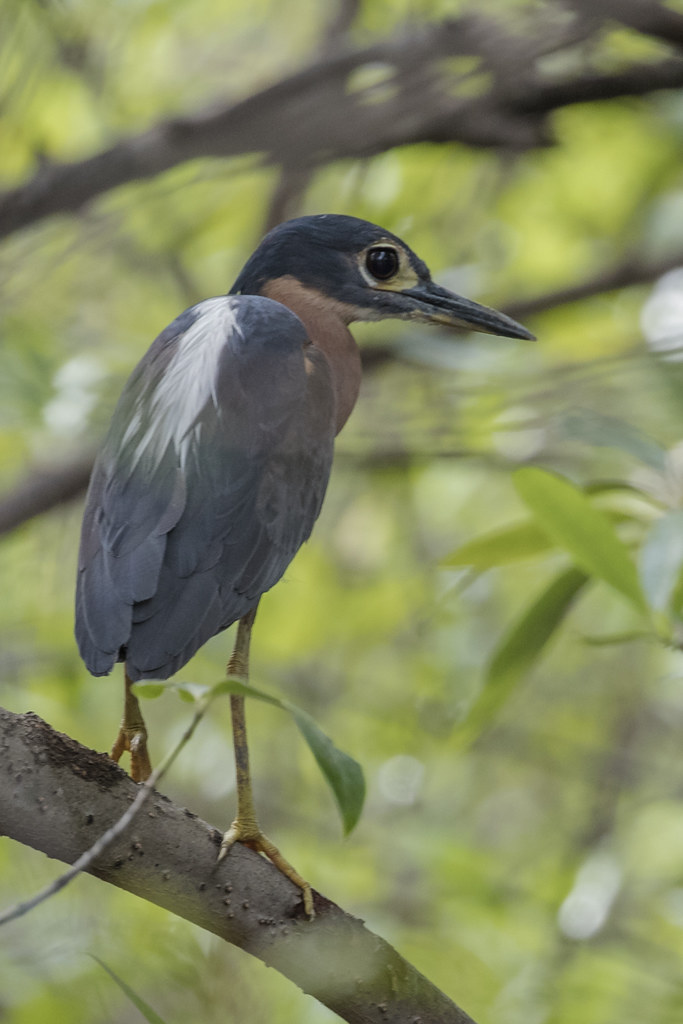
The boat turned back for one more view.
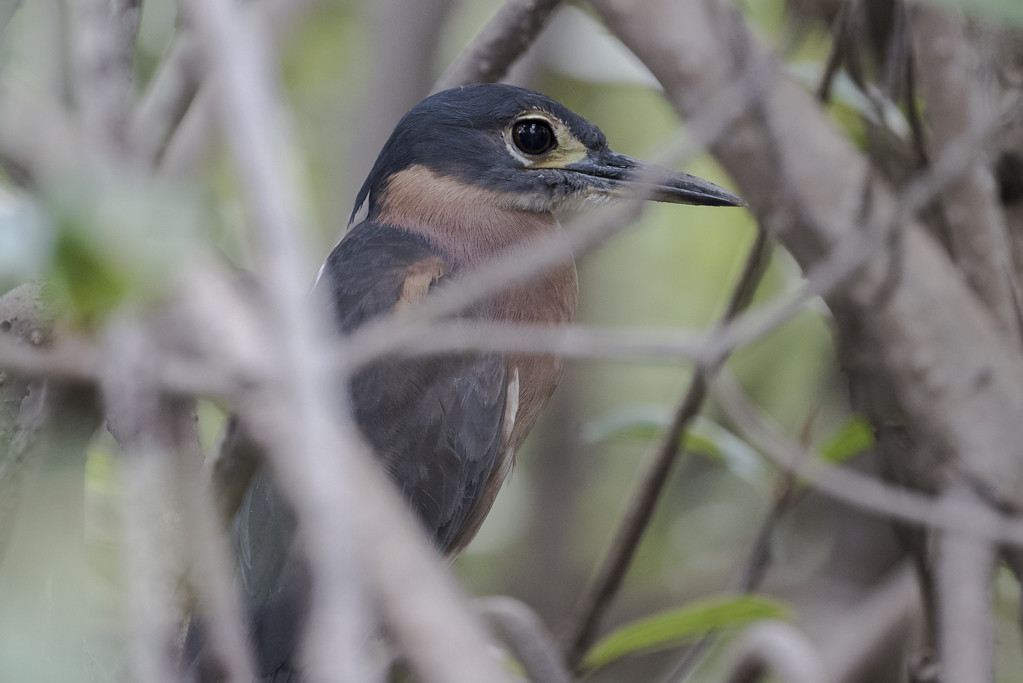
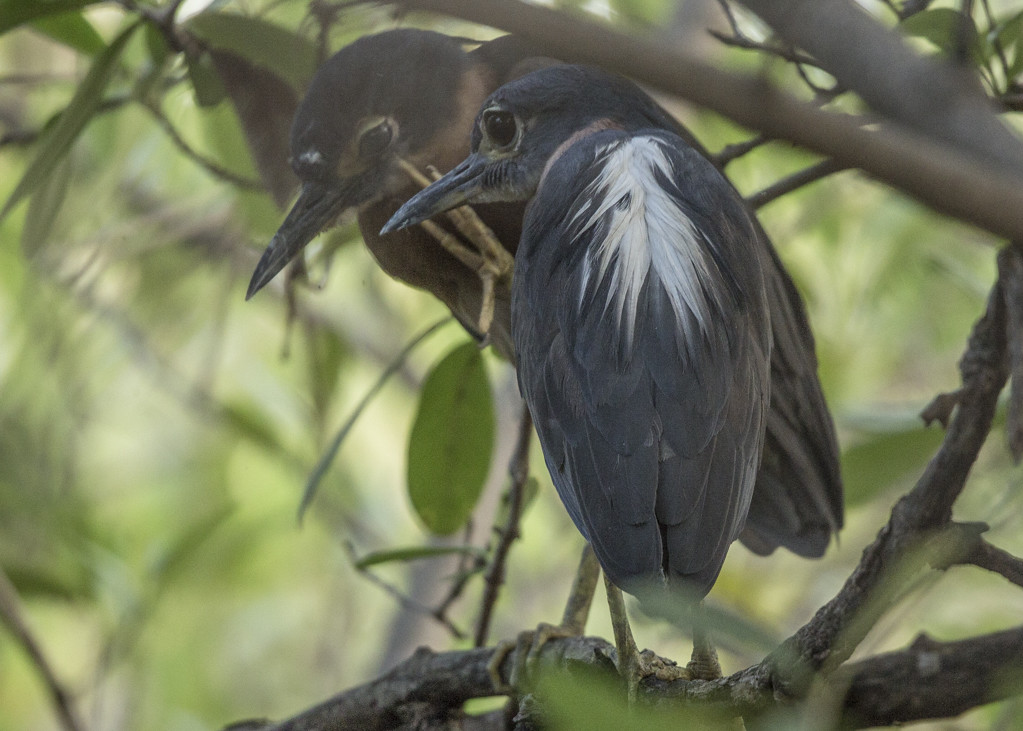
As they had retreated some distance I was now using the 500mm lens with a 2x converter in a rocking boat with all sorts of leaf and branches in the way of a clear view.
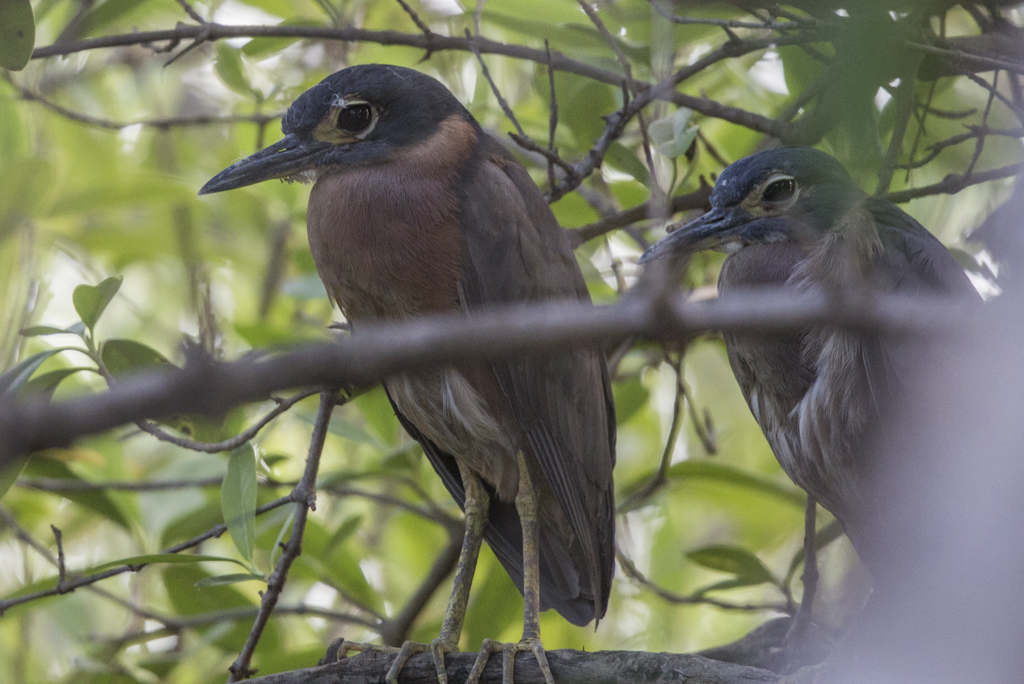
It was a case of 14 frames per second in the hope I would get something worthwhile to keep and the results are better than I expected but not as I would really want. However, somethings are more important than a picture and that includes minimising disturbance. A noisy boat with petrol fumes flooding the area was not desirable so we left them in peace very quickly. Hopefully they will rear their chicks successfully With only one boat making two trips a day lets hope they get the peace they need.
That was it then, back to camp where I was pleased to hear our guide suggest another visit to the photo hide!
He had arranged with the local person assigned responsibility to look after it to take out the branches from the pool and top up the water. I wanted to try a perch to see if that made for better opportunities photographically.
I found a suitable stick, a bit of breeze block and a couple of wedges and hey presto, let's see if it works.
Bingo! Within minutes I was getting all sorts perched on it!
Vitelline Masked Weaver
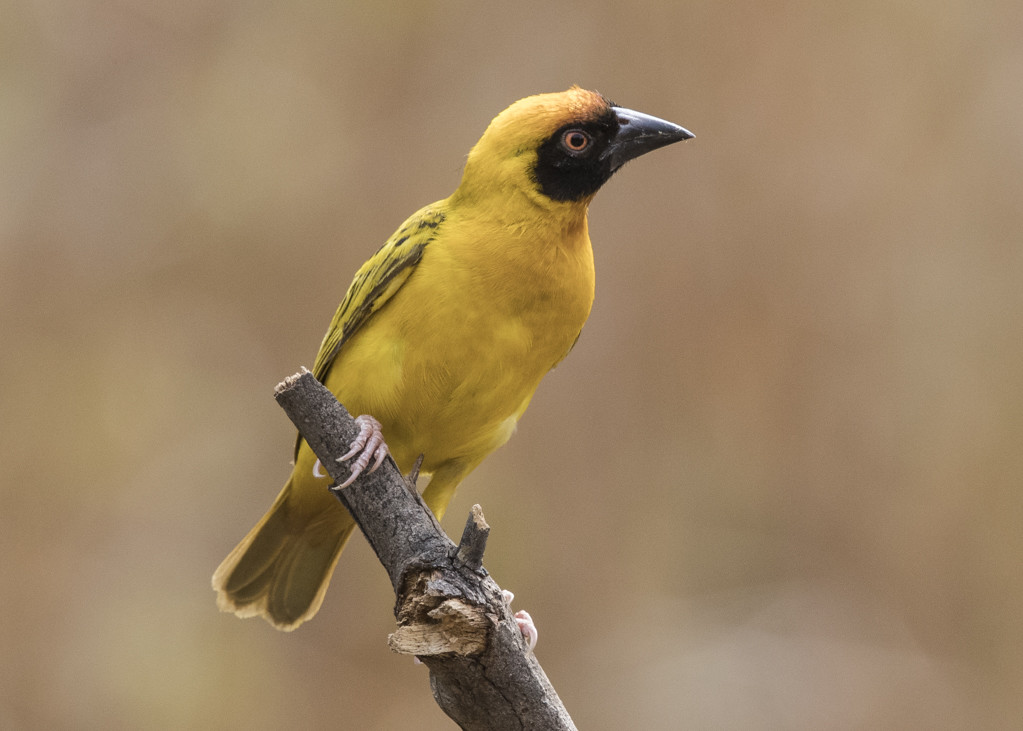
Red-cheeked Cordon-bleu
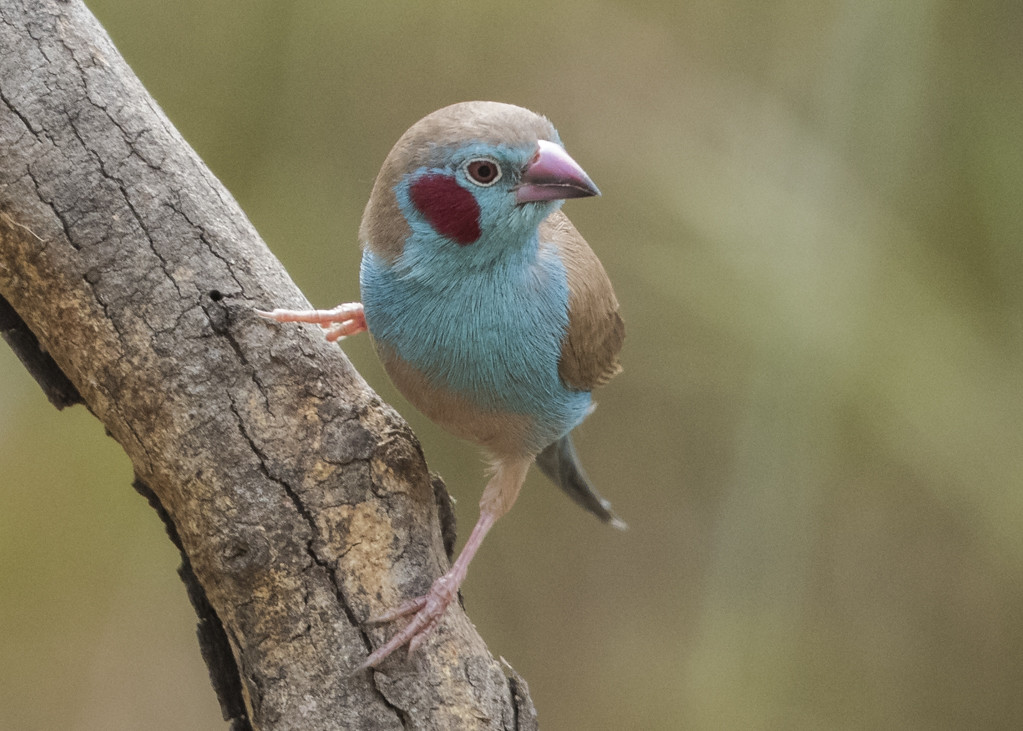
Lavender Waxbill
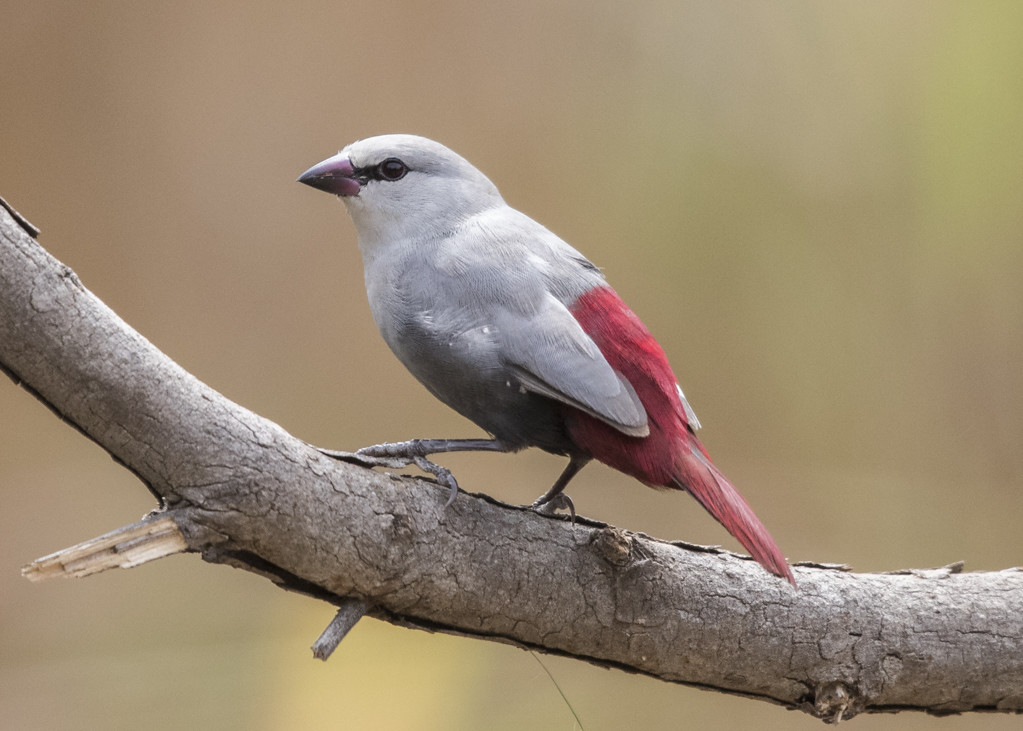
Village Weaver
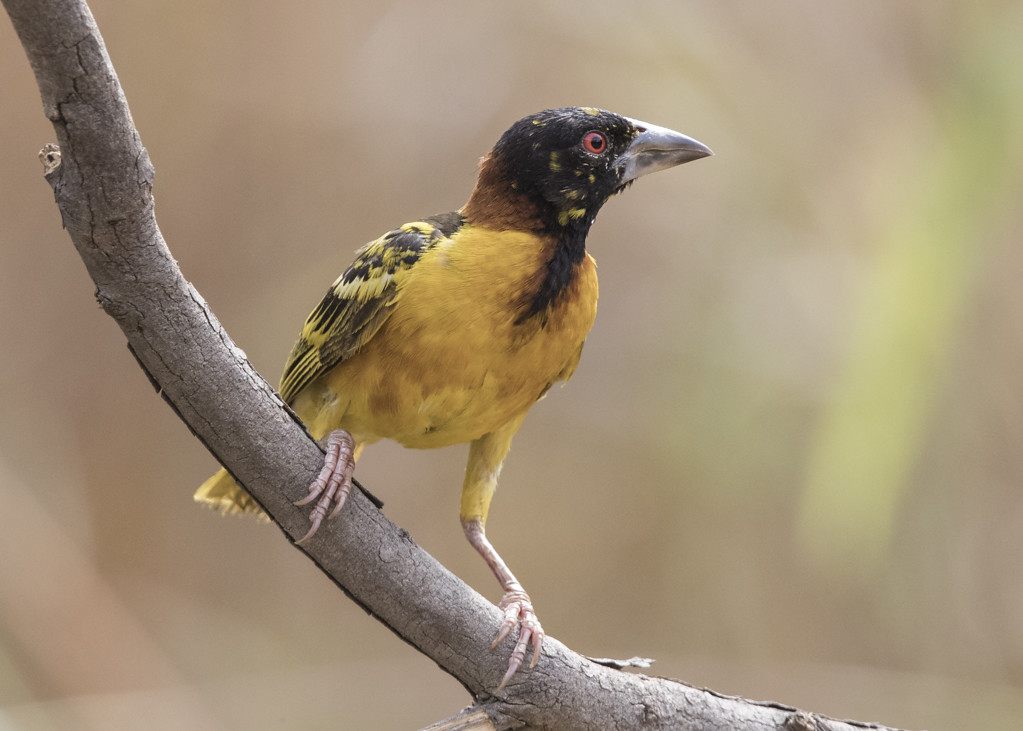
Common Bulbul
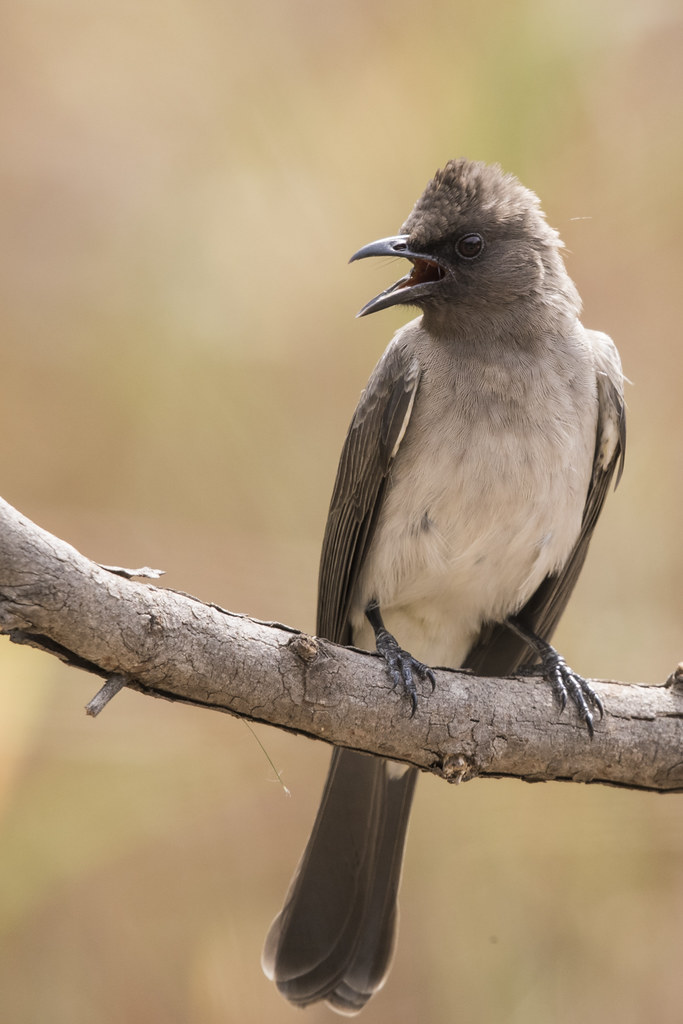
but best of all, a Red -winged Pytillia
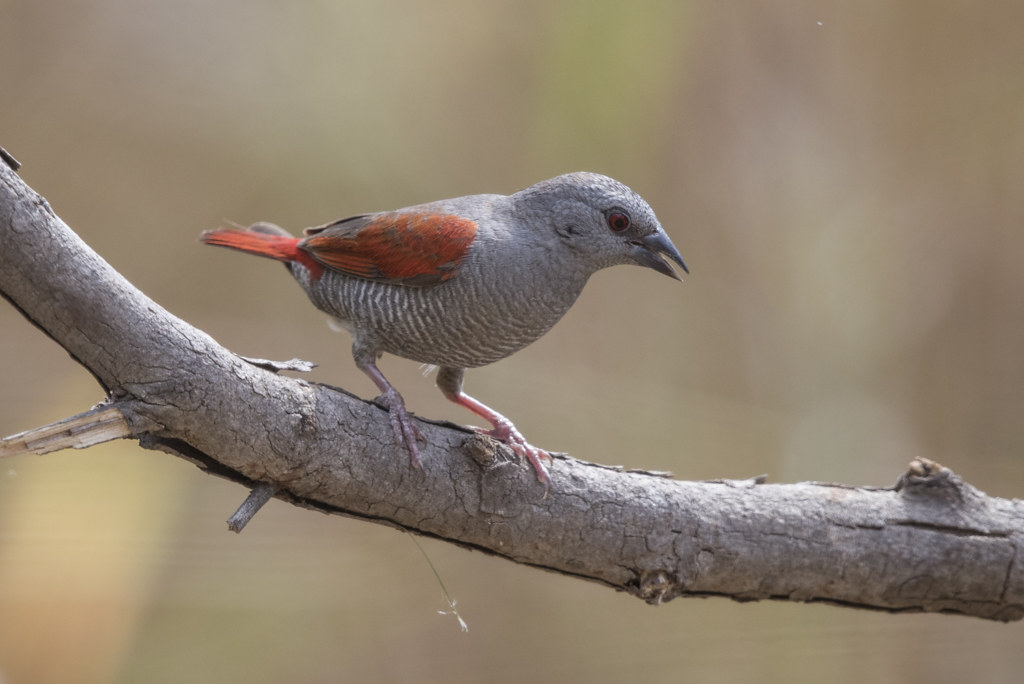
And not just an adult but a juvenile too!
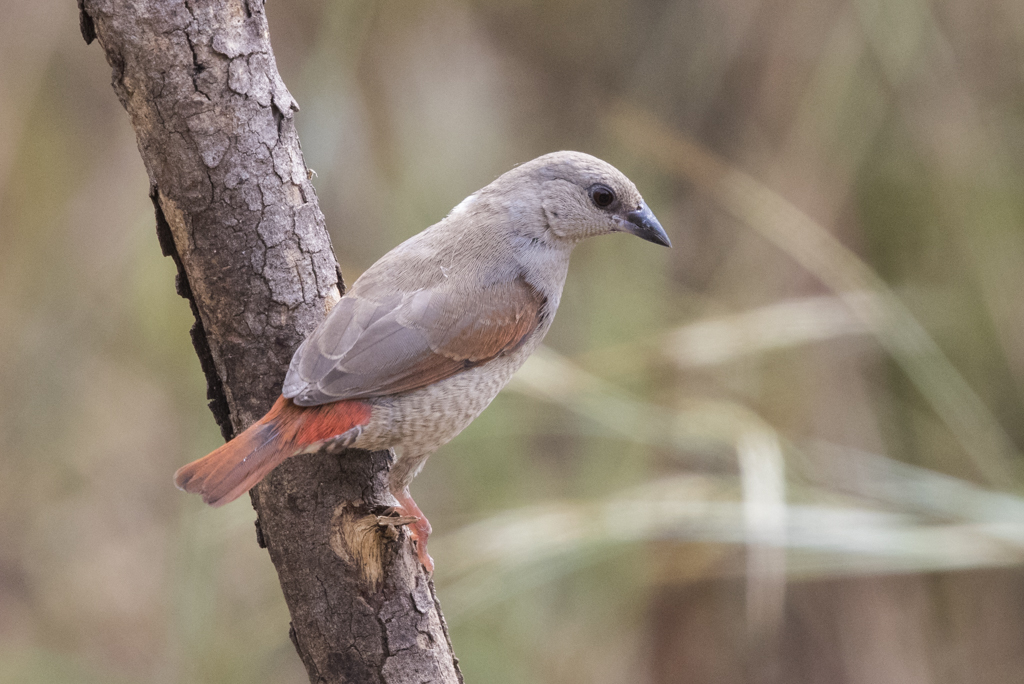
Another cracking bird to arrive was a Cut-throat Finch
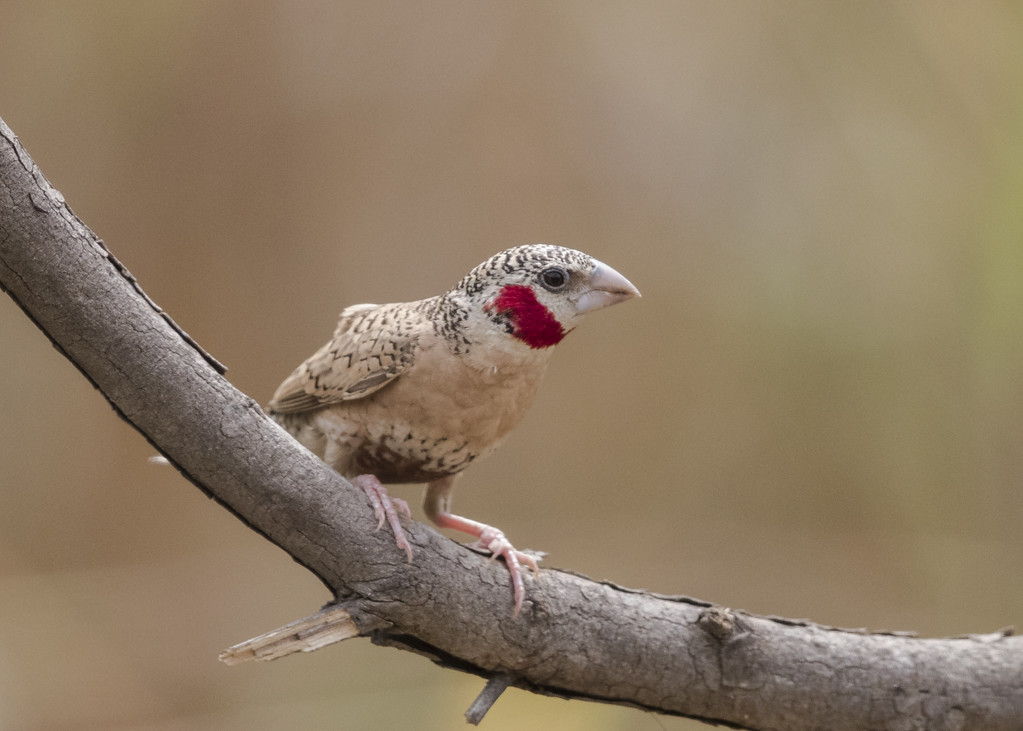
Again, joined by a juvenile bird I think although I'm not 100% on that ID..
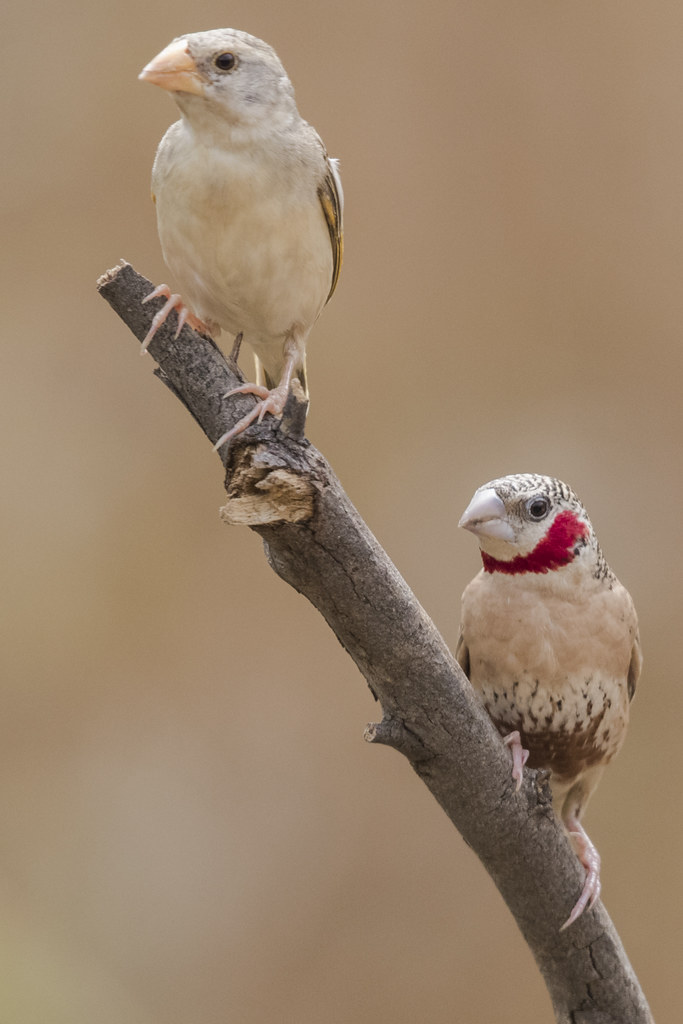
It was satisfying that the perch worked in bringing the birds out in to the open but again, the results were not 100% aesthetically pleasing but I had little to work with. The hide's minder wanted to put more up but I persuaded him to stop at two ! It's about quality not quantity and the more perches the less chance you have your camera on the right one. Still, it's a start and I wonder how things will progress.
More natural looking surrounds would be better of course and that is very achievable with a little effort, in the meantime I grabbed shots were I could when birds landed in the bushes.
Northern Red Bishop
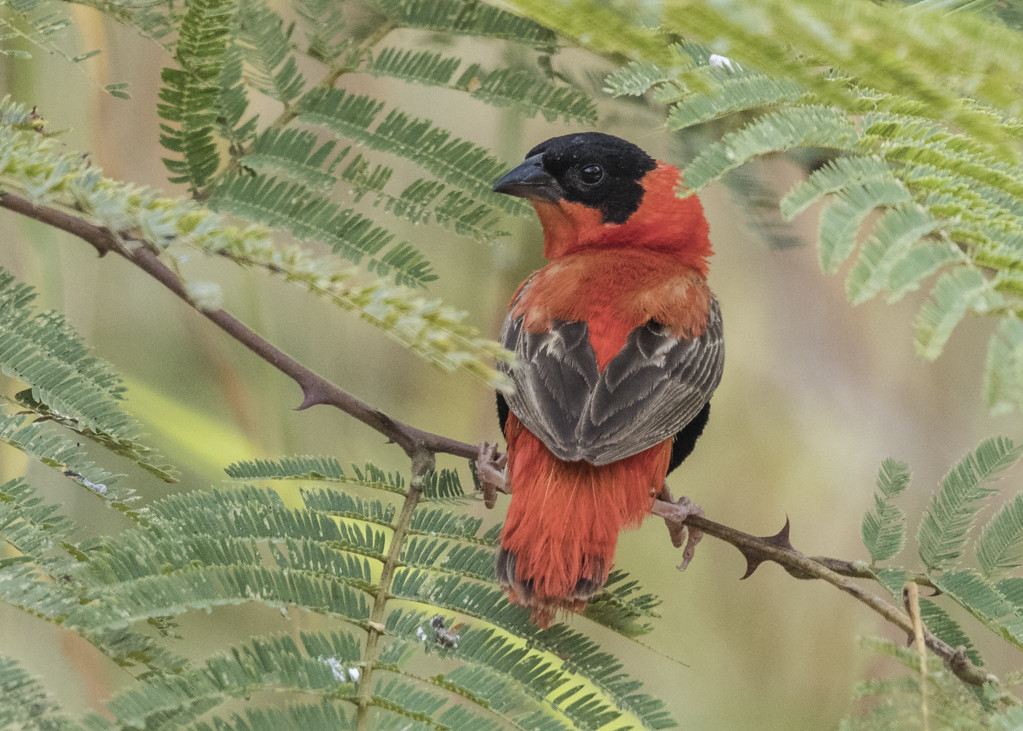
The Bishop is starting to revert back to non breeding plumage.
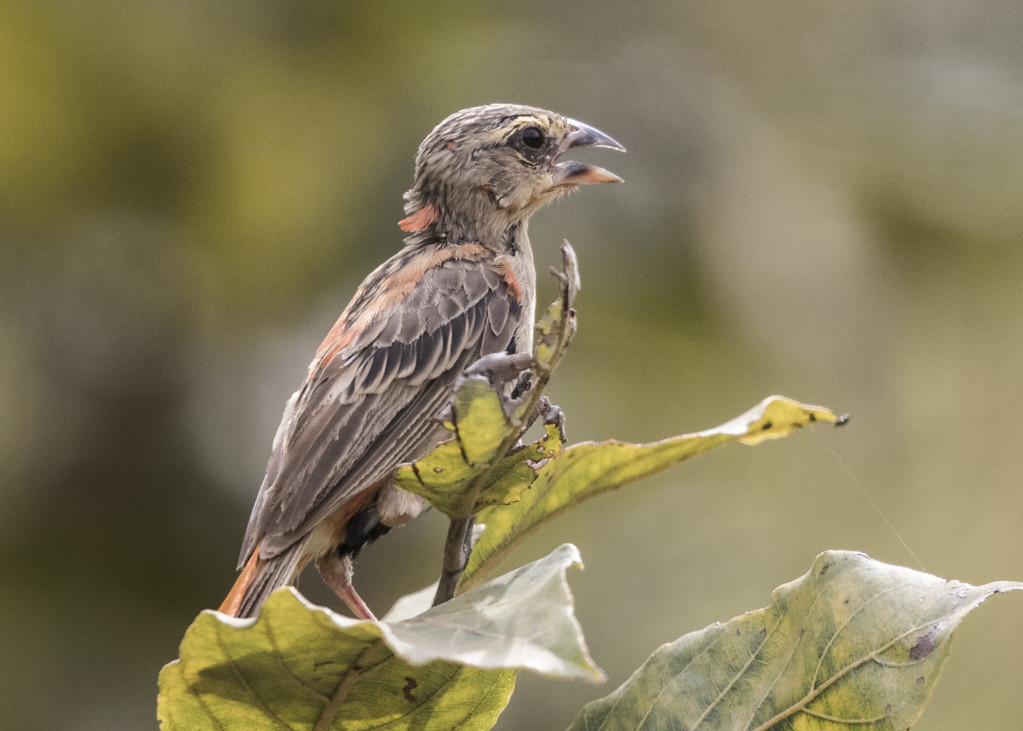
Given a choice of either this Black-rumped Waxbill shot
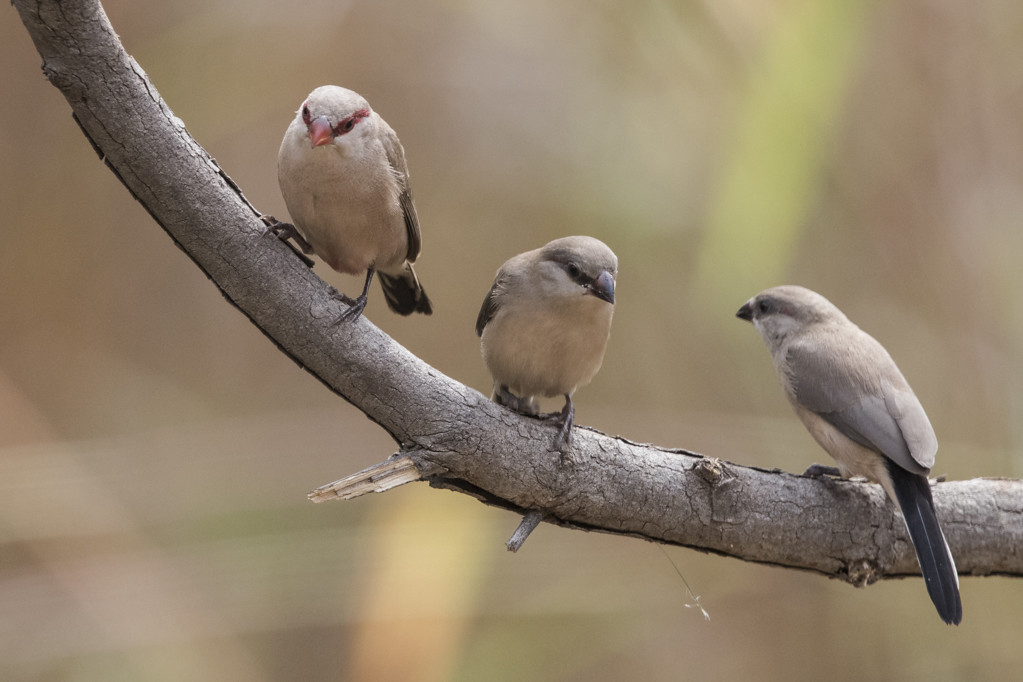
or this one
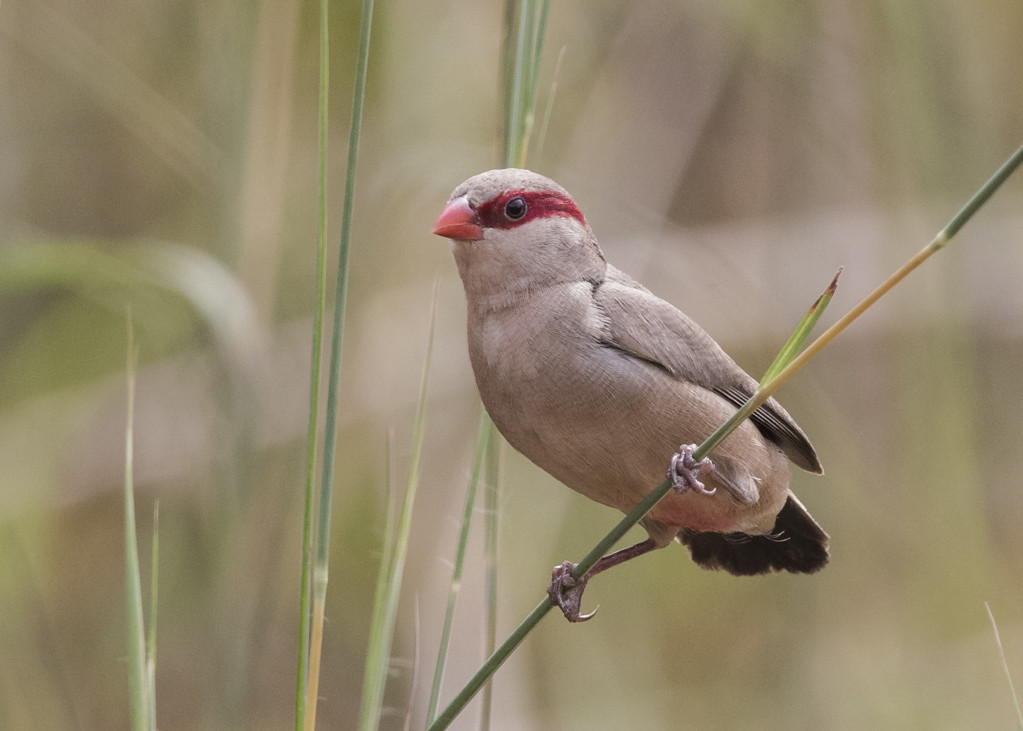
It's a no brainer. But shots " au naturel " are not always a viable option.
pleased the Cut-throat Finch obliged though!
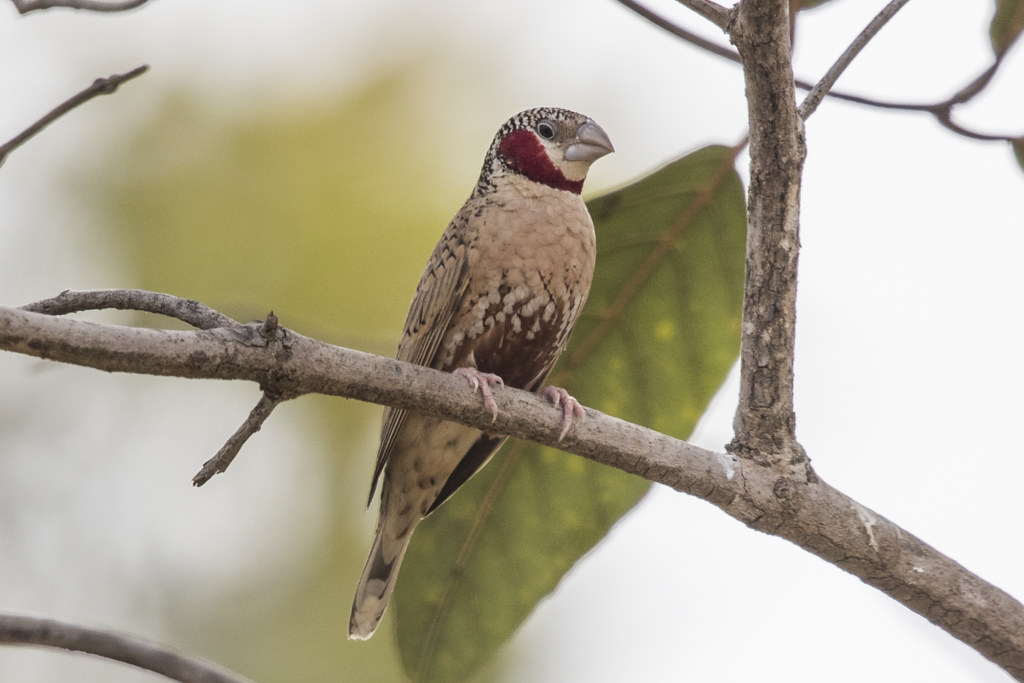
I spent several happy hours, by this time on my own save the "minder". Overcome with the heat Alan had retired to camp. He's not quite as passionate about photography as I am. No gain without pain as they say! It was pretty damn hot in there though, especially with nothing to drink.
Eventually I left and after a break back at camp we headed off for a guided trip in to the nearby national park.
We were searching for the Abyssinian Ground Hornbill, one we missed last time too. For Alan it was high up his wanted list and although I had seen one distantly in Kenya, I decided it would feature in my top five too. I would like a decent shot and if it took some time to find one so be it.
Oh, well. If things came easily there would be little point.
Alan was delighted to see another first, a fly past Bataleur, we had a Exclamatory Paradise Whydah, a lifer for us both.
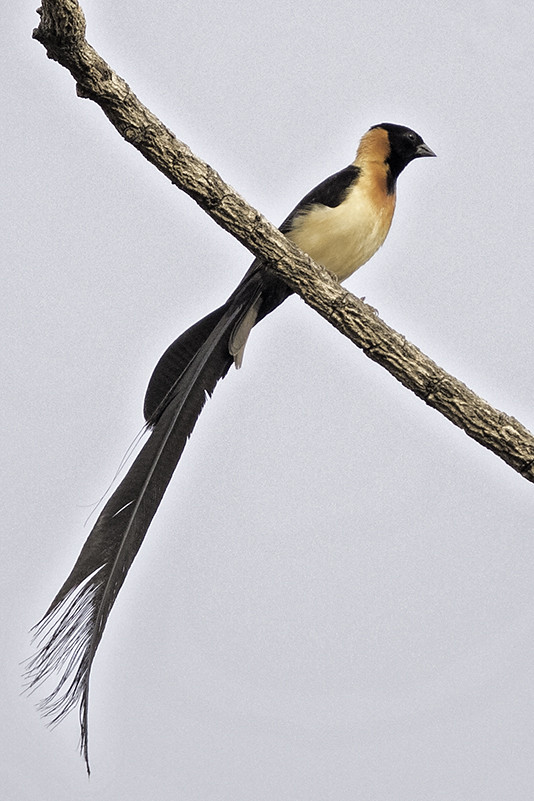
and this Striped Kingfisher
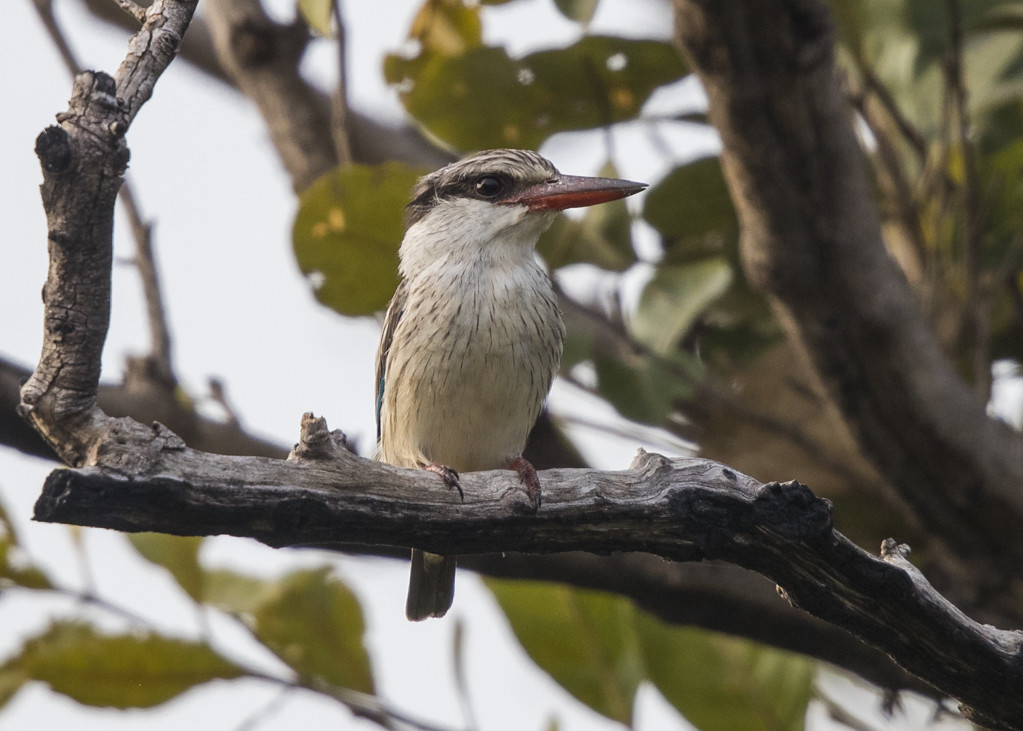
displaying in a nearby tree.
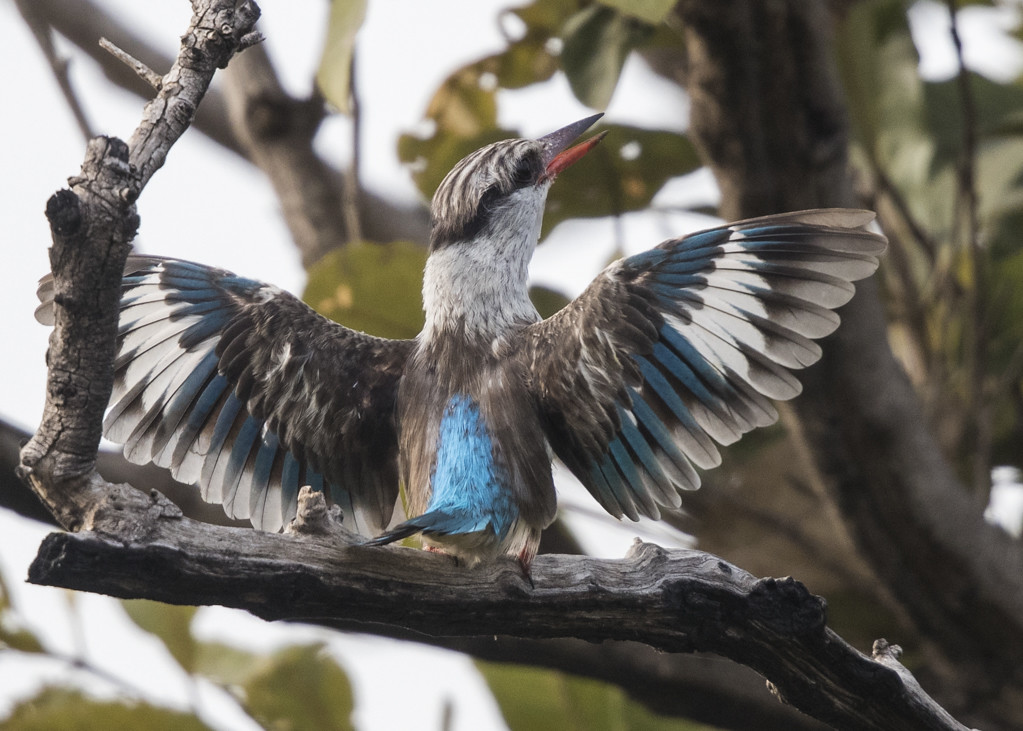
The light was fading by now but fair do's, our guide was as keen as ever as we went off in search of Nightjars.
It was Alan and myself that decided to call an end to the day. The attraction of a shower and a thirst quencher an even more attractive proposition even if the beer was warm.
We updated our species list, it was still very lightweight. It had been a mixed bag of a day really. In hindsight wasn't that bad but there again my hopes had been set too high I supposer.
Tomorrow a new adventure would take us further inland than ever before. I was really looking forward to it but would my expectations fail yet again?
TBC
No comments:
Post a Comment